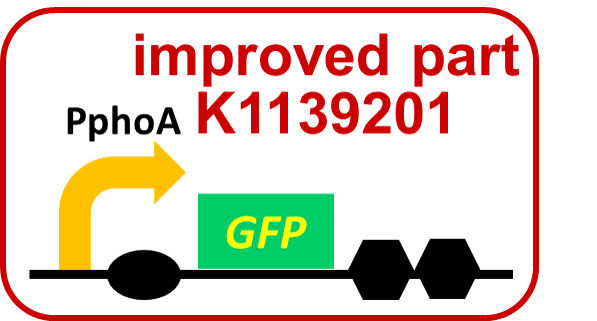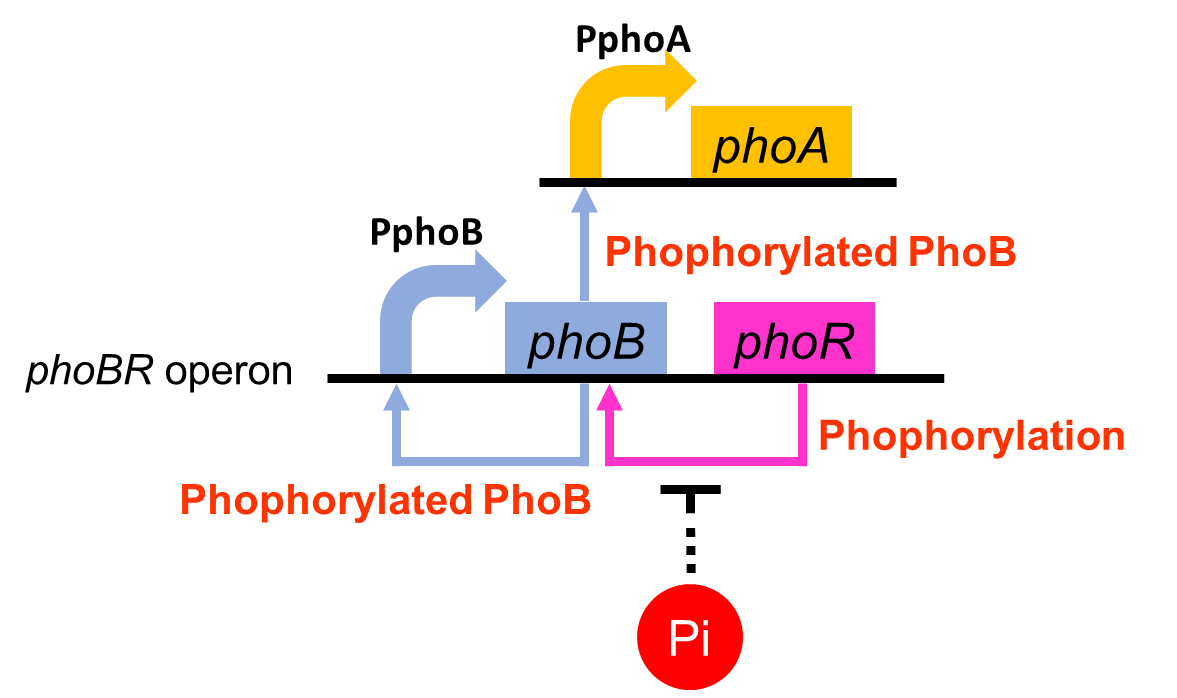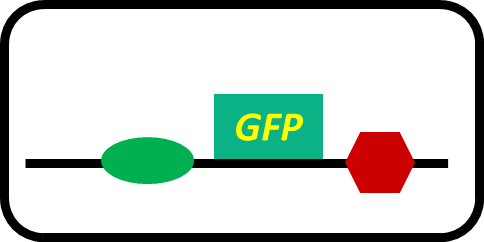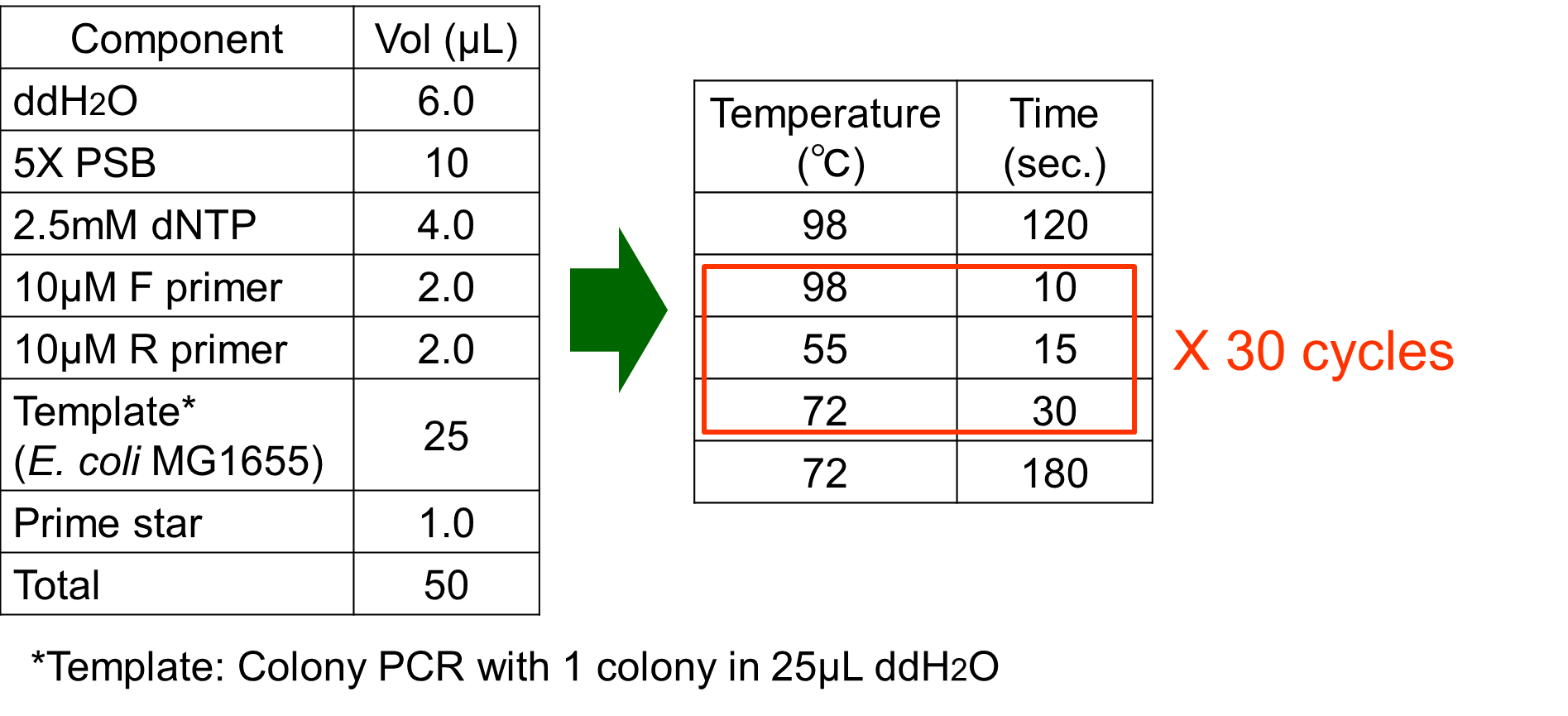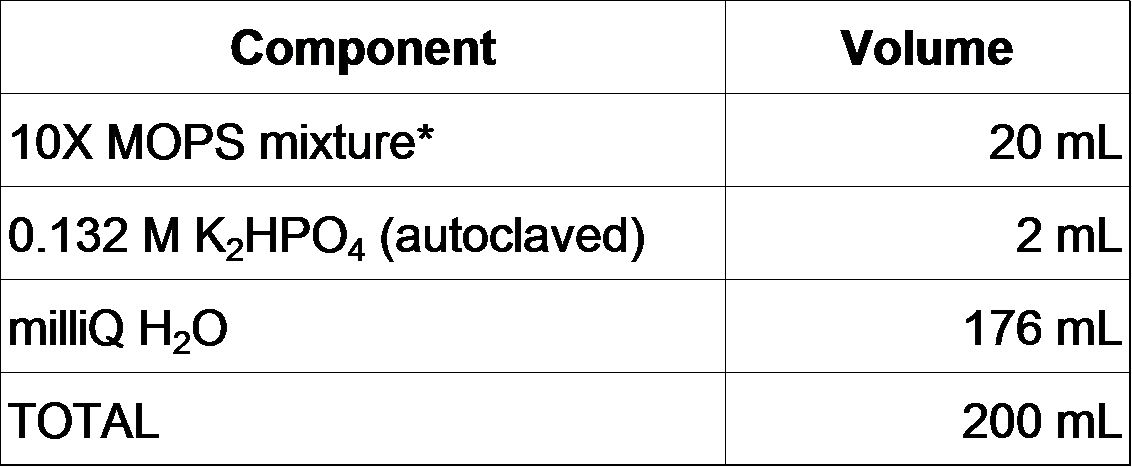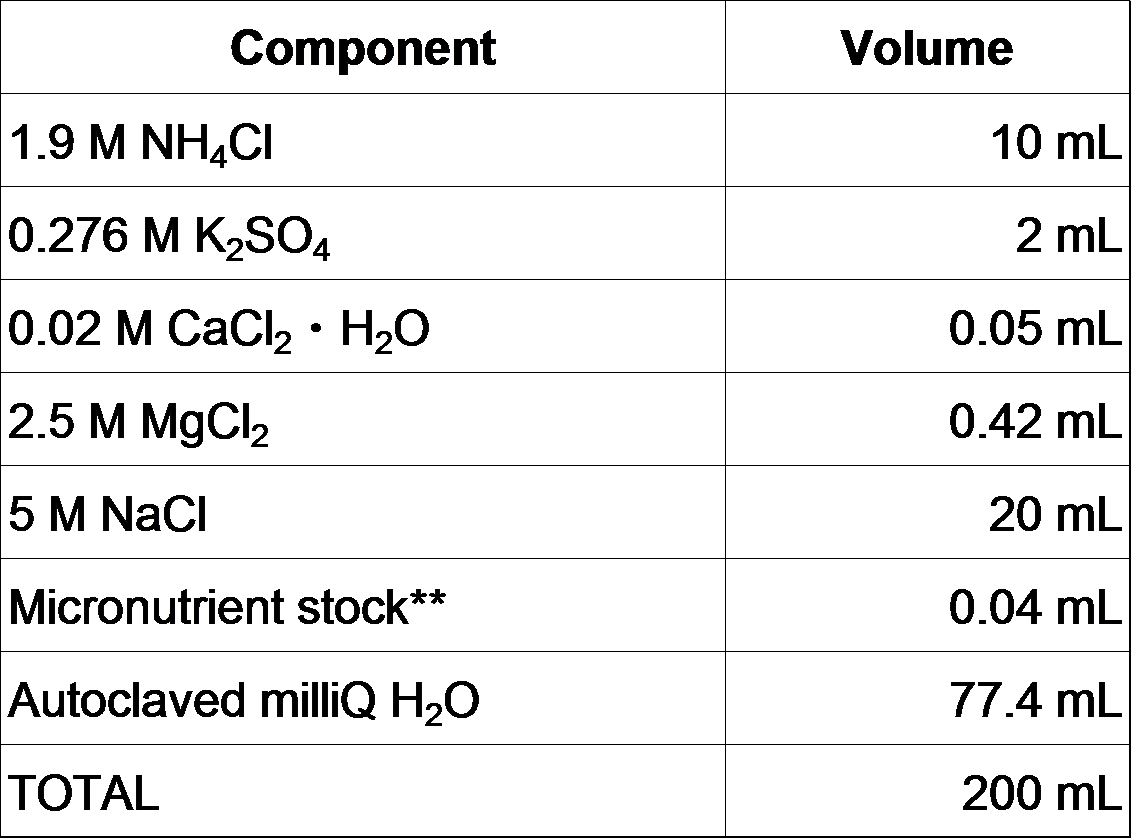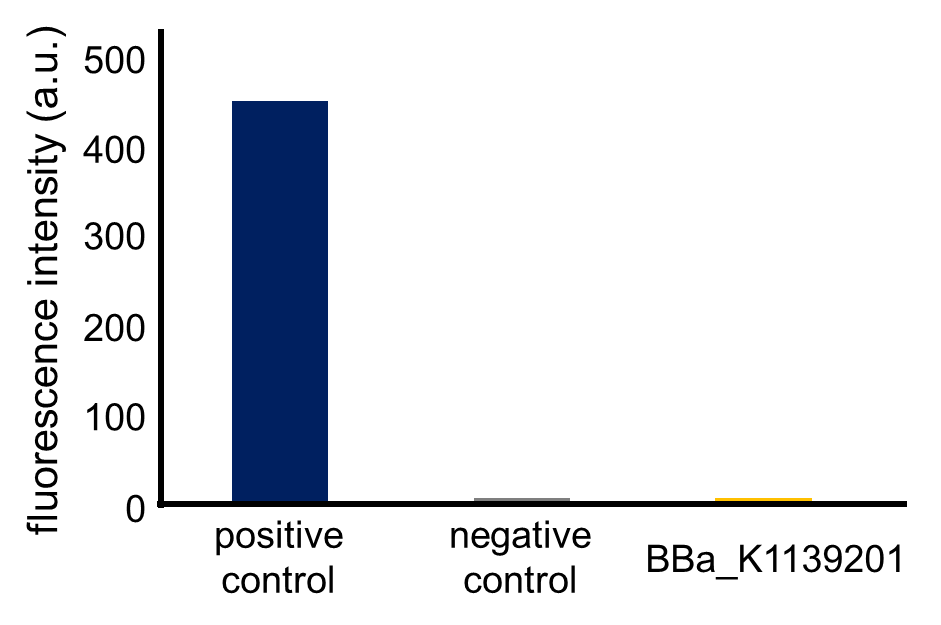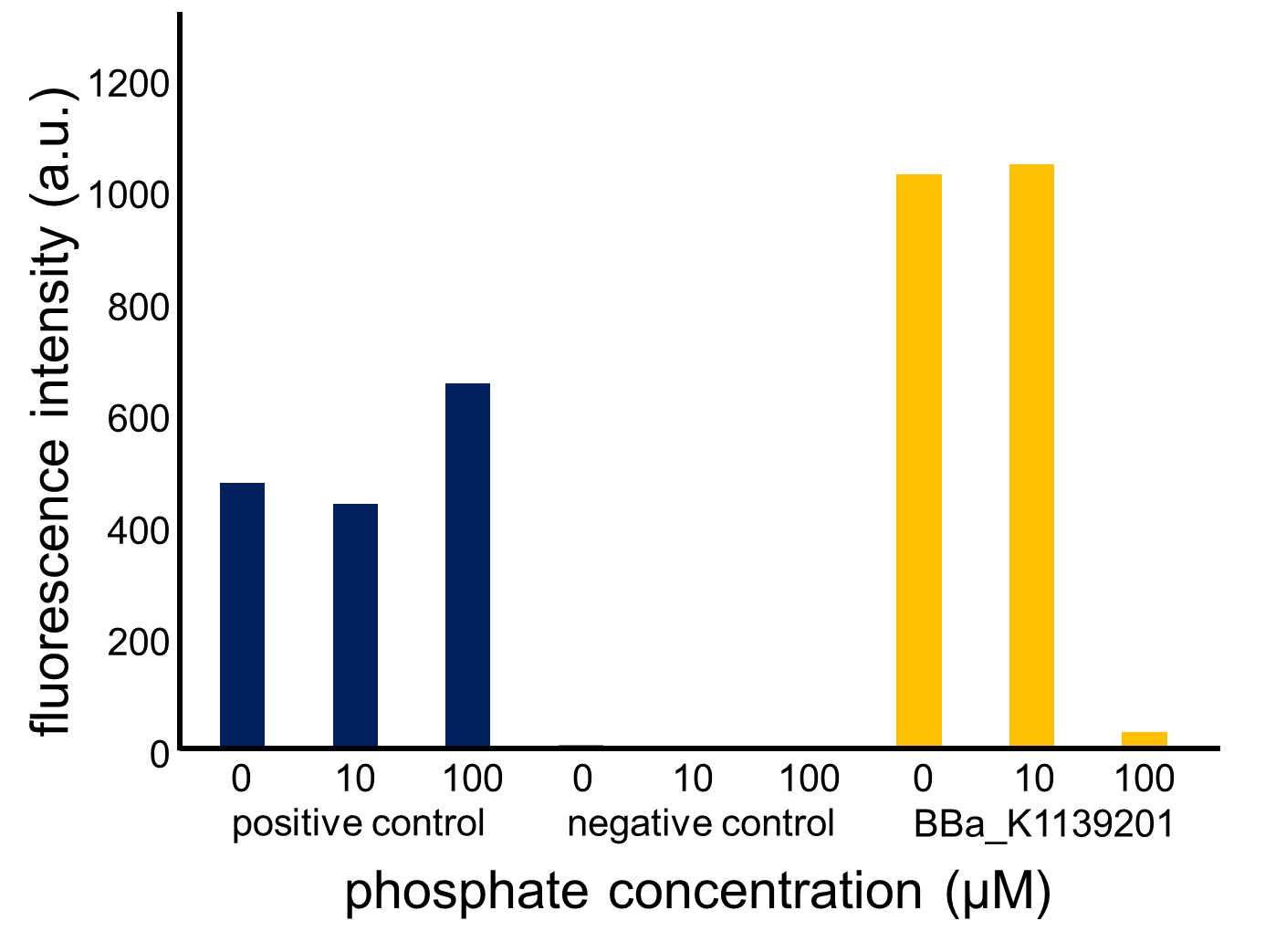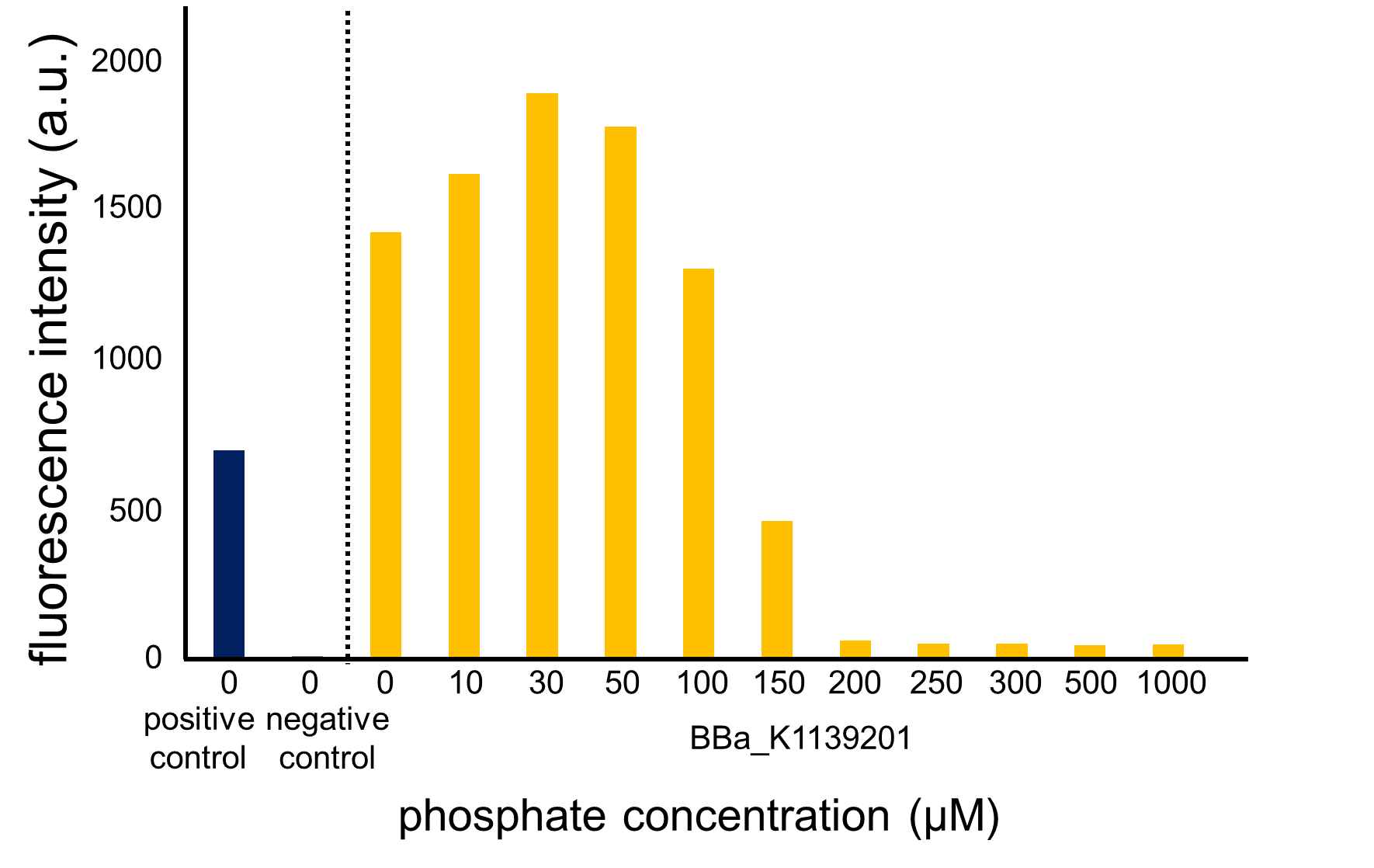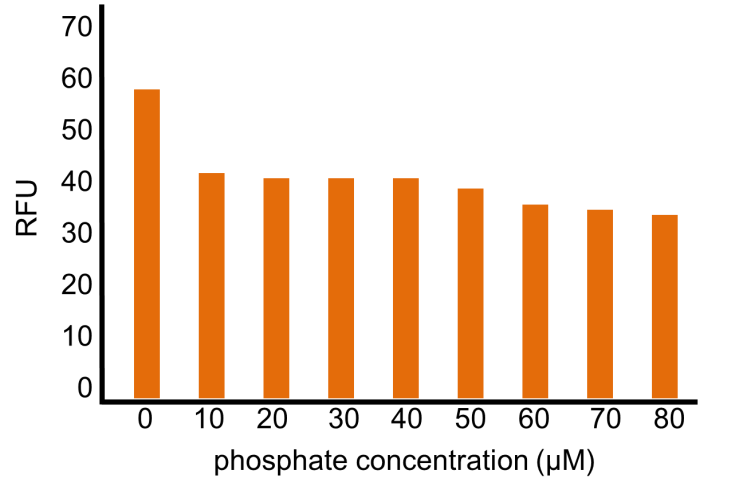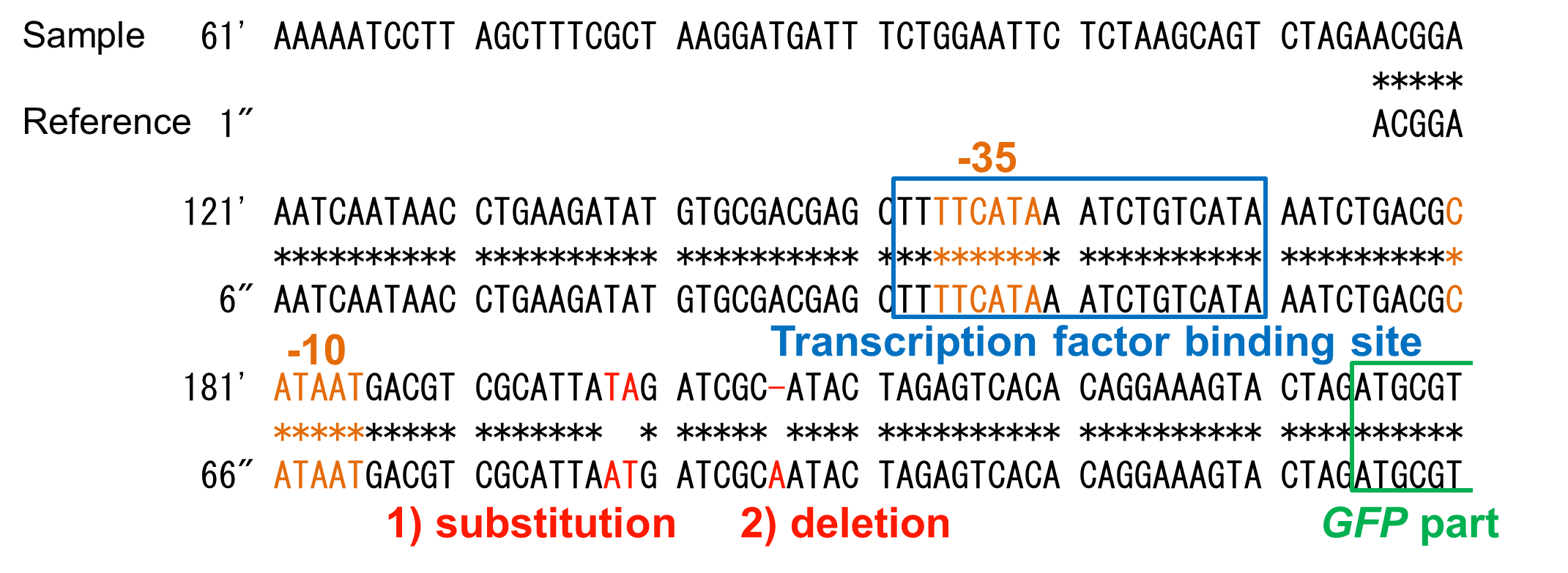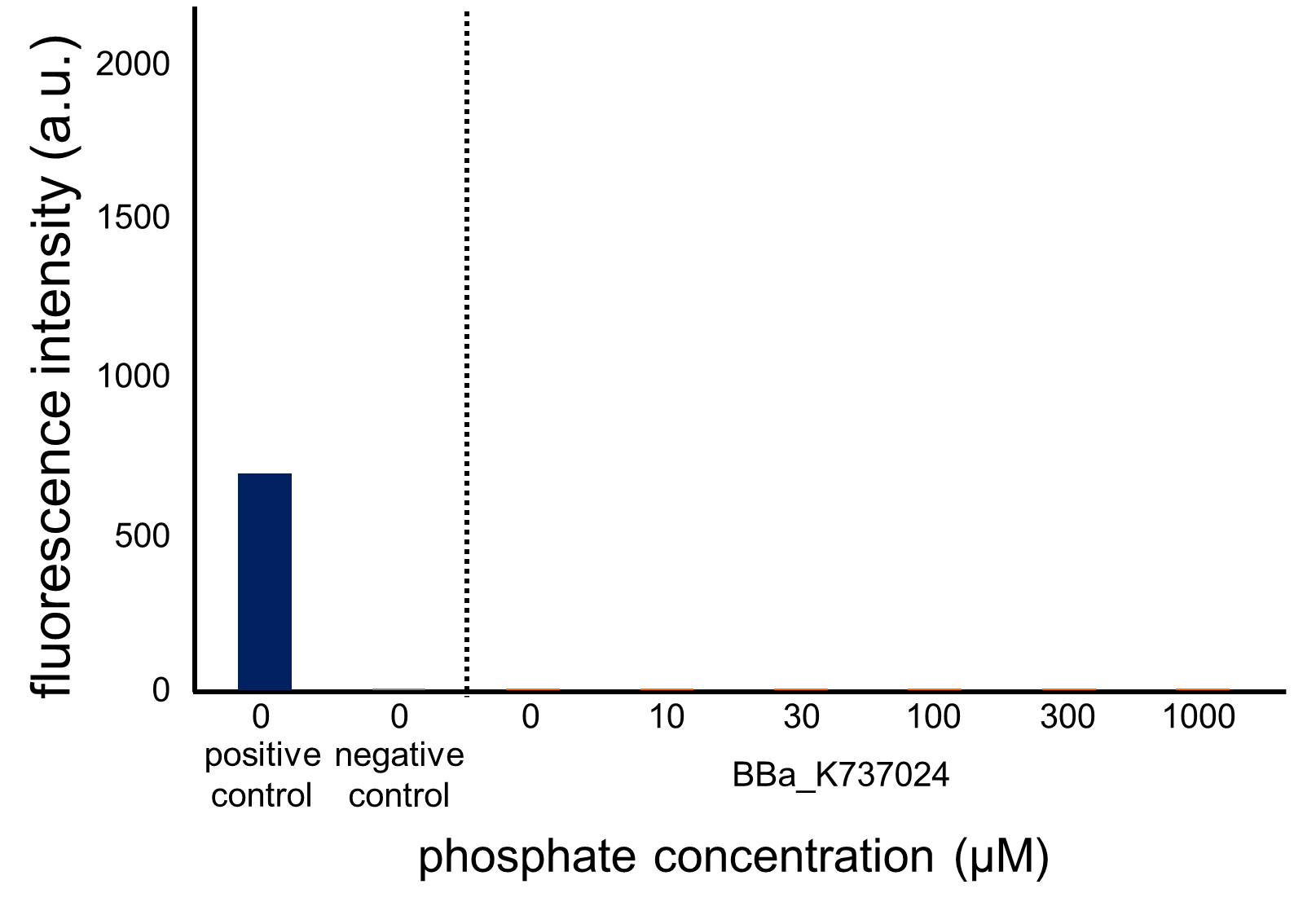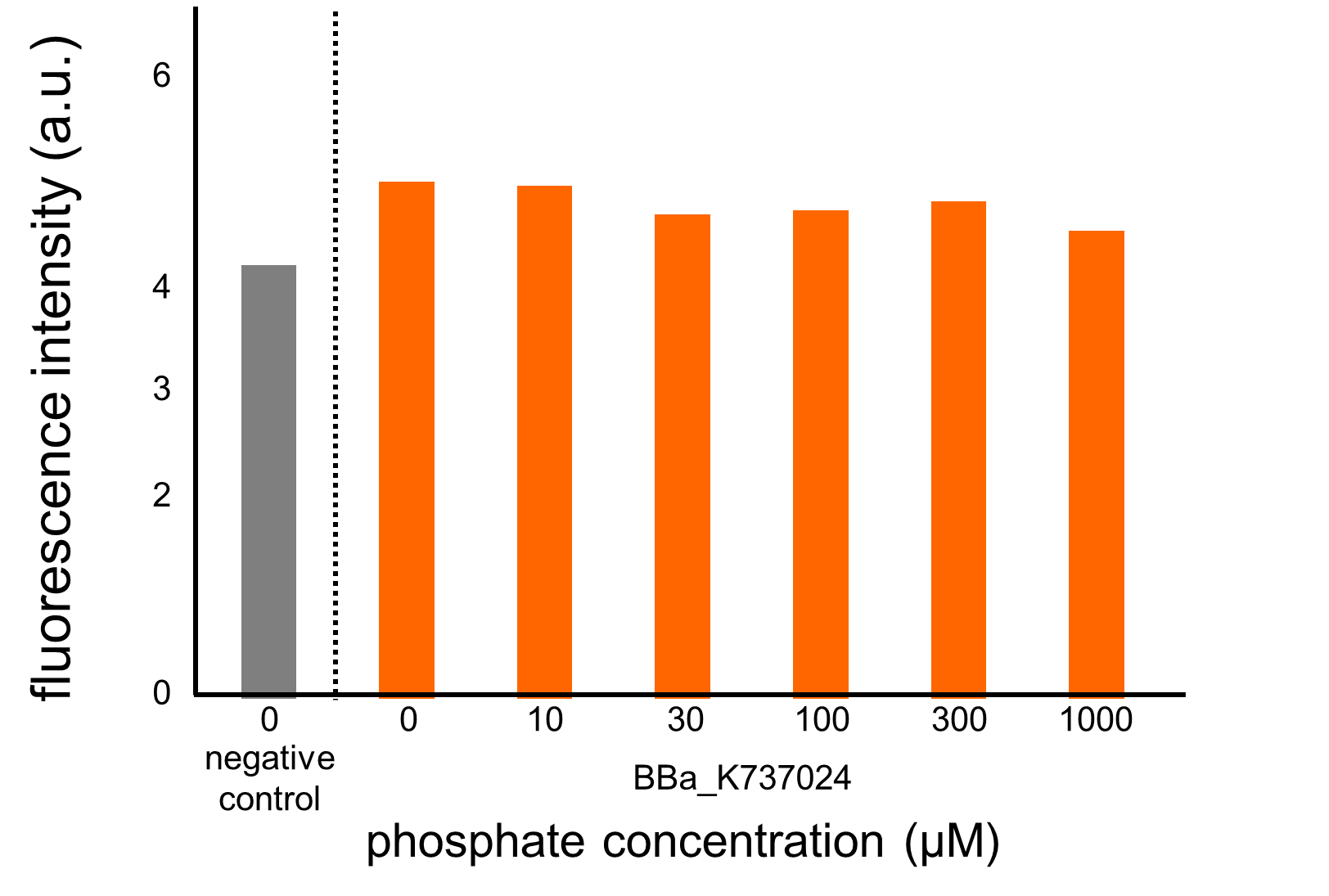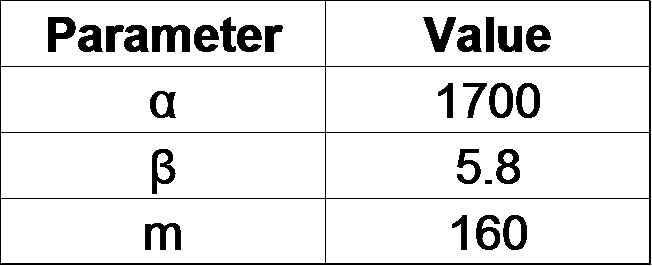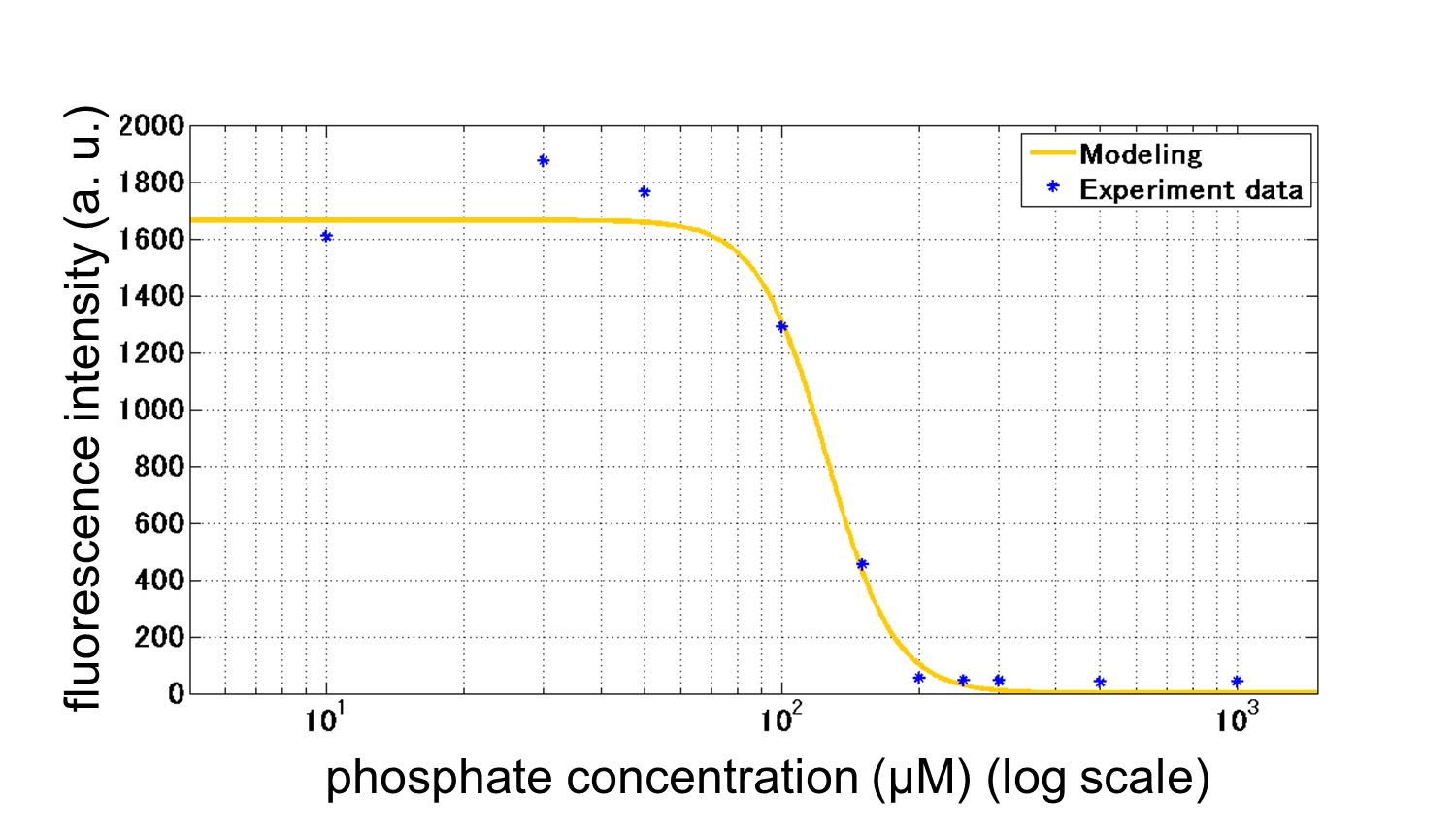Team:Tokyo Tech/Experiment/phoA Promoter Assay
From 2013.igem.org
ShuntaSuzuki (Talk | contribs) |
|||
| (53 intermediate revisions not shown) | |||
| Line 2: | Line 2: | ||
<div id="text-area"><br> | <div id="text-area"><br> | ||
<div class="box" id="title"> | <div class="box" id="title"> | ||
| - | <p style="line-height:0em; text-indent:0em;"><i>phoA</i> Promoter Assay</p> | + | <p style="line-height:0em; text-indent:0em;" name="top"><i>phoA</i> Promoter Assay</p> |
</div> | </div> | ||
<div class="box"> | <div class="box"> | ||
| Line 8: | Line 8: | ||
<h2> | <h2> | ||
<p> | <p> | ||
| - | To realize our farming project, we improved a phosphate sensor part ([http://parts.igem.org/Part: | + | To realize our farming project, we improved a phosphate sensor part since the existing phosphate sensor part does not have sufficient data (OUC-China 2012, [http://parts.igem.org/Part:BBa_K737024 BBa_K737024]). Our part ([http://parts.igem.org/Part:BBa_K1139201 BBa_K1139201], Fig. 3-5-1) includes the inducible promoter of the alkaline phosphatase gene (<i>phoA</i>) derived from <i>E.coli</i> (Dollard et al., 2003). The <i>phoA</i> promoter is repressed by high phosphate concentrations. Fig. 3-5-2 shows the regulation of the <i>phoA</i> promoter in brief. The <i>phoA</i> promoter is regulated by <i>phoB</i> and <i>phoR</i>, which belong to the <i>pho</i> regulon (Shinagawa et al., 1983). Phosphorylated PhoB directly activates the expression of <i>phoA</i>. Under conditions of phosphate limitation, PhoR phosphorylates PhoB. On the other hand, under conditions of high phosphate concentrations, PhoR dephosphorylate phospho-PhoB (Hsieh et al., 2010). We amplified the <i>phoA</i> promoter from <i>E. coli</i> (MG1655). We ligated this promoter upstream of <i>GFP</i> part and introduced this part into <i>E. coli</i> (MG1655). By following induction assay, we confirmed that the <i>phoA</i> promoter was actually repressed by the increase in phosphate concentration. |
</p> | </p> | ||
[[Image:Titech2013_phoa_Fig_3-5-1.png|300px|thumb|center|Fig. 3-5-1. Our improved part for phosphate sensing]] | [[Image:Titech2013_phoa_Fig_3-5-1.png|300px|thumb|center|Fig. 3-5-1. Our improved part for phosphate sensing]] | ||
| - | [[Image:Titech2013_phoa_Fig_3-5-2.png|400px|thumb|center|Fig. 3-5-2. | + | [[Image:Titech2013_phoa_Fig_3-5-2.png|400px|thumb|center|Fig. 3-5-2. Regulation of the <i>phoA</i> promoter]] |
| Line 20: | Line 20: | ||
<div style="margin-left:3em; text-indent:0em;"> | <div style="margin-left:3em; text-indent:0em;"> | ||
<br> | <br> | ||
| - | -pSB6A1-PphoA-GFP (MG1655) | + | -pSB6A1-PphoA-<i>GFP</i> (MG1655)…[http://parts.igem.org/Part:BBa_K1139201 BBa_K1139201] |
[[Image:Titech2013_phoa_Fig_3-5-3.png|250px|thumb|none|Fig. 3-5-3]] | [[Image:Titech2013_phoa_Fig_3-5-3.png|250px|thumb|none|Fig. 3-5-3]] | ||
<br> | <br> | ||
| - | -pSB6A1-Ptet-GFP (MG1655)… positive control | + | -pSB6A1-Ptet-<i>GFP</i> (MG1655)… positive control |
[[Image:Titech2013_phoa_Fig_3-5-4.png|150px|thumb|none|Fig. 3-5-4]] | [[Image:Titech2013_phoa_Fig_3-5-4.png|150px|thumb|none|Fig. 3-5-4]] | ||
<br> | <br> | ||
| - | -pSB6A1-promoterless-GFP (MG1655)… negative control | + | -pSB6A1-promoterless-<i>GFP</i> (MG1655)… negative control |
[[Image:Titech2013_phoa_Fig_3-5-5.png|150px|thumb|none|Fig. 3-5-5]] | [[Image:Titech2013_phoa_Fig_3-5-5.png|150px|thumb|none|Fig. 3-5-5]] | ||
<br> | <br> | ||
</div> | </div> | ||
<p> | <p> | ||
| - | The <i>phoA</i> promoter region of <i>E. coli</i> was amplified from MG1655 genomic DNA by PCR using upstream primer ( | + | The <i>phoA</i> promoter region of <i>E. coli</i> was amplified from MG1655 genomic DNA by PCR using upstream primer (5'-acgtgaattcgcggccgcttctagagaaagttaatcttttcaacagctgtcataaag-3') and downstream primer (5'-ccgctactagtaaatacattaaaaaataaaaacaaagcgactataagtctc-3'). Amplification was carried out with the steps shown in Fig. 3-5-6. |
</p></h2> | </p></h2> | ||
| - | [[Image:Titech2013_phoa_Fig_3-5-6.png|450px|thumb|center|Fig. 3-5-6. Steps for PCR of <i>phoA</i> promoter]] | + | <h2> |
| + | [[Image:Titech2013_phoa_Fig_3-5-6.png|450px|thumb|center|Fig. 3-5-6. Steps for PCR of the <i>phoA</i> promoter]] | ||
| + | </h2> | ||
<h3>2-2. Assay Protocol</h3> | <h3>2-2. Assay Protocol</h3> | ||
<h2> | <h2> | ||
| - | + | <p>Prepare MOPS minimal medium as follows (Neidhardt et al., 1974). Also, prepare a series of phosphate concentration gradient 1X MOPS by changing the volume of K<sub>2</sub>HPO<sub>4</sub> (we prepared the series as 0, 10, 30, 50, 100, 150, 200, 250, 300, 500, 1000 µM). | |
| - | Also, prepare a series of phosphate concentration gradient 1X MOPS by changing the volume of K<sub>2</sub>HPO<sub>4</sub> ( | + | </p> |
| - | < | + | </h2> |
| + | <h2> | ||
<em> | <em> | ||
| - | + | Prepare MOPS minimal medium | |
</em> | </em> | ||
| + | </h2> | ||
| + | <h2> | ||
<p> | <p> | ||
200 mL of 1X MOPS is prepared as follows. | 200 mL of 1X MOPS is prepared as follows. | ||
| Line 54: | Line 59: | ||
</p> | </p> | ||
<ol> | <ol> | ||
| - | <li> Add the following to ~60 mL milliQ | + | <li> Add the following to ~60 mL milliQ H<sub>2</sub>O: |
[[Image:Titech2013_phoa_Fig_3-5-8.png|450px|thumb|center|Fig. 3-5-8. Preparation of 10X MOPS mixture-1]] | [[Image:Titech2013_phoa_Fig_3-5-8.png|450px|thumb|center|Fig. 3-5-8. Preparation of 10X MOPS mixture-1]] | ||
<li> Add 5 M KOH to a final pH of 7.4. | <li> Add 5 M KOH to a final pH of 7.4. | ||
<li> Bring total volume to 88 mL. | <li> Bring total volume to 88 mL. | ||
| - | <li> Make fresh | + | <li> Make fresh FeSO<sub>4</sub> solution and add it to the MOPS/Tricine solution: |
[[Image:Titech2013_phoa_Fig_3-5-9.png|450px|thumb|center|Fig. 3-5-9. Preparation of 10X MOPS mixture-2]] | [[Image:Titech2013_phoa_Fig_3-5-9.png|450px|thumb|center|Fig. 3-5-9. Preparation of 10X MOPS mixture-2]] | ||
<li> Add the following solutions to the MOPS/Tricine/FeSO<sub>4</sub> solution (Mix in the order shown). | <li> Add the following solutions to the MOPS/Tricine/FeSO<sub>4</sub> solution (Mix in the order shown). | ||
| Line 66: | Line 71: | ||
<p>**Micronutrient stock (50 mL) | <p>**Micronutrient stock (50 mL) | ||
</p> | </p> | ||
| + | </ol> | ||
<p> | <p> | ||
Mix everything together in 40 mL autoclaved milliQ H<sub>2</sub>O, bring up total volume to 50 mL. | Mix everything together in 40 mL autoclaved milliQ H<sub>2</sub>O, bring up total volume to 50 mL. | ||
| Line 71: | Line 77: | ||
</p> | </p> | ||
[[Image:Titech2013_phoa_Fig_3-5-11.png|450px|thumb|center|Fig. 3-5-11. Preparation of 10X MOPS mixture-4]] | [[Image:Titech2013_phoa_Fig_3-5-11.png|450px|thumb|center|Fig. 3-5-11. Preparation of 10X MOPS mixture-4]] | ||
| + | </h2> | ||
| + | <br> | ||
| + | <h2> | ||
| + | <em> | ||
| + | <i>phoA</i> Promoter Assay | ||
| + | </em> | ||
| + | </h2> | ||
| + | <h2> | ||
<ol> | <ol> | ||
| - | + | <li>Prepare overnight cultures of BBa_K1139201, positive control and negative control, each in MOPS medium (including 1.32 mM K<sub>2</sub>HPO<sub>4</sub>) containing ampicillin (50 µg/mL) at 37°C.<br> | |
| - | <br> | + | <li>Dilute the overnight cultures to an OD600 of 0.1 in fresh MOPS medium (3 mL) containing ampicillin (50 µg/mL). (→fresh cultures)<br> |
| - | <br> | + | <li>Incubate the fresh cultures until the observed OD600 reaches 0.4-0.6.<br> |
| - | <br> | + | <li>Centrifuge the cells at 6,000g, 25°C, 10 minutes. Wash twice with MOPS minimal medium without phosphate, containing ampicillin (50 µg/mL). Then, suspend the cells in the same medium to obtain a final OD600 of 10.<br> |
| - | <br> | + | <li>Add 300 µL of prepared cell suspension to 2.7 mL of test solution, the series of phosphate concentration gradient 1X MOPS, containing ampicillin (50 µg/mL).<br> |
| - | <br> | + | <li>Incubate the cells for 140 minutes at 26°C.<br> |
| - | <br> | + | <li>1 mL of each culture was harvested by centrifugation and suspended by adding 1 mL of PBS (phosphate-buffered saline). Dilute the suspension to obtain a final OD600 of around 0.2 by PBS.<br> |
| - | <br> | + | <li>Dispense 600 µL of each suspension into a disposable tube through a cell strainer. Fluorescence intensity was measured with a flow cytometer of Becton, Dickinson and Company. |
</ol> | </ol> | ||
</h2> | </h2> | ||
| Line 87: | Line 101: | ||
<p>Fig. 3-5-12 shows the fluorescence intensity of the fresh cultures (the MOPS medium which contains 1.32 mM K<sub>2</sub>HPO<sub>4</sub>) incubated until the observed OD600 reached 0.4-0.6 (Assay protocol 2-2-3). The <i>phoA</i> promoter was repressed because the MOPS medium contained 1.32 mM phosphate, which was a high concentration for <i>phoA</i> promoter. | <p>Fig. 3-5-12 shows the fluorescence intensity of the fresh cultures (the MOPS medium which contains 1.32 mM K<sub>2</sub>HPO<sub>4</sub>) incubated until the observed OD600 reached 0.4-0.6 (Assay protocol 2-2-3). The <i>phoA</i> promoter was repressed because the MOPS medium contained 1.32 mM phosphate, which was a high concentration for <i>phoA</i> promoter. | ||
</p> | </p> | ||
| - | |||
[[Image:Titech2013_phoa_Fig_3-5-12.png|450px|thumb|center|Fig. 3-5-12. Fluorescence intensity of the fresh cultures]] | [[Image:Titech2013_phoa_Fig_3-5-12.png|450px|thumb|center|Fig. 3-5-12. Fluorescence intensity of the fresh cultures]] | ||
| + | </h2> | ||
<h3>3-2. After inducing by phosphate concentration</h3> | <h3>3-2. After inducing by phosphate concentration</h3> | ||
<h2> | <h2> | ||
| - | <p>Fig. 3-5-13 and 14 show the fluorescence intensity of the induced cells by phosphate concentration. | + | <p>Fig. 3-5-13 and Fig. 3-5-14 show the fluorescence intensity of the induced cells by phosphate concentration. In Fig. 3-5-13, we saw that the <i>phoA</i> promoter was repressed by high phosphate concentrations, while the constitutive promoter did not show any significant change. Fig. 3-5-14 also proved that the increase in phosphate concentration repressed the <i>phoA</i> promoter. Fig. 3-5-15 shows the picture of fluorescence of the induced cells. Especially, we confirmed that the <i>phoA</i> promoter was drastically repressed at phosphate concentrations of 100 to 200 µM. |
</p></h2> | </p></h2> | ||
| + | <h2> | ||
[[Image:Titech2013_phoa_Fig_3-5-13.png|450px|thumb|center|Fig. 3-5-13. Fluorescence intensity of the induced cells (with positive and negative controls)]]<br> | [[Image:Titech2013_phoa_Fig_3-5-13.png|450px|thumb|center|Fig. 3-5-13. Fluorescence intensity of the induced cells (with positive and negative controls)]]<br> | ||
| - | [[Image:Titech2013_phoa_Fig_3-5-15.png|450px|thumb|center|Fig. 3-5-14. Fluorescence intensity of the induced cells of | + | [[Image:Titech2013_phoa_Fig_3-5-15.png|450px|thumb|center|Fig. 3-5-14. Fluorescence intensity of the induced cells of BBa_K1139201]]<br> |
[[Image:Titech2013_phoa_Fig_3-5-14.png|450px|thumb|center|Fig. 3-5-15. Picture of fluorescence of the induced cells]] | [[Image:Titech2013_phoa_Fig_3-5-14.png|450px|thumb|center|Fig. 3-5-15. Picture of fluorescence of the induced cells]] | ||
</h2> | </h2> | ||
<h1>4. Discussion</h1> | <h1>4. Discussion</h1> | ||
<h2> | <h2> | ||
| - | <p>We confirmed that the increase in phosphate concentration repressed the <i>phoA</i> promoter. | + | <p>We confirmed that the increase in phosphate concentration repressed the <i>phoA</i> promoter and succeeded in improving the phosphate sensor part.</p> |
| + | <p>Though OUC-China 2012 reported a phosphate sensor part including the <i>phoB</i> promoter ([http://parts.igem.org/Part:BBa_K737024 BBa_K737024]), their part did not have sufficient data for us. Their assay data (Fig. 3-5-16, converted to bar chart) did not show significant change in RFU (relative fluorescent unit) in response to phosphate concentrations. The positive and the negative control were not shown. Their references for constructing and assaying the part were not clear, either. In addition, we found some mutations (substitution and deletion) in their part through analyzing the DNA sequence (Fig. 3-5-17). | ||
</p> | </p> | ||
| - | <gallery widths="350px" heights="200px" style="margin-left: auto; | + | [[Image:Titech2013_phoa_Fig_3-5-16.png|450px|thumb|center|Fig. 3-5-16. OUC-China 2012's <i>phoB</i> promoter assay result reported by them (converted to bar chart)]]<br> |
| - | Image:Titech2013_phoa_Fig_3-5-15.png|Fig. 3-5- | + | [[Image:Titech2013_phoa_Fig_3-5-20.png|450px|thumb|center|Fig. 3-5-17. Mutations found in OUC-China's phosphate sensor part]]<br> |
| - | Image:Titech2013_phoa_Fig_3-5- | + | </h2> |
| - | </gallery> | + | <h5> |
| + | <p> | ||
| + | <div style="margin-left:80px;"> | ||
| + | We found two mutations (substitution and deletion) in their part through analyzing the DNA sequence. | ||
| + | </div></p> | ||
| + | </h5> | ||
| + | <h2> | ||
| + | <p>We assayed OUC-China's phosphate sensor part by the same method as that for our <i>phoA</i> promoter assay since we thought that the <i>phoB</i> promoter should also be repressed by high phosphate concentrations. According to previous reports, the regulation of the <i>phoB</i> promoter is similar to that of the <i>phoA</i> promoter (Fig. 3-5-2, Shinagawa et al., 1983). The result of this assay (Fig. 3-5-19, enlarged view in Fig. 3-5-20) shows clearly that their part did not respond to the increase in phosphate concentration compared to our part including the <i>phoA</i> promoter (Fig. 3-5-18). Therefore, we hypothesize that the mutations have something to do with the activity of the <i>phoB</i> promoter.</p> | ||
| + | <p>Thus, we conclude that we improved the phosphate sensor part. Our part can be useful not only for our project but also for various studies in synthetic biology. | ||
| + | </p> | ||
| + | </h2> | ||
| + | <h2> | ||
| + | <gallery widths="350px" heights="200px" style="margin-left: auto; margin-right: auto; text-align:center;"> | ||
| + | Image:Titech2013_phoa_Fig_3-5-15.png|Fig. 3-5-18. Our induction assay result for our <i>phoA</i> promoter | ||
| + | Image:Titech2013_phoa_Fig_3-5-21.png|Fig. 3-5-19. Our induction assay result for OUC-China 2012's <i>phoB</i> promoter</gallery> | ||
| + | [[Image:Titech2013_phoa_Fig_3-5-22.png|450px|thumb|center|Fig. 3-5-20. Enlarged view of Fig. 3-5-19]]<br> | ||
</h2> | </h2> | ||
<h1>5. Modeling </h1> | <h1>5. Modeling </h1> | ||
<h2> | <h2> | ||
| - | <p>From our results | + | <p>From our results above, we determined parameters for the induction mechanism. By fitting the results to the following Hill equation (Fig. 3-5-21), we identified the parameters for the induction mechanism. α denotes the maximum GFP expression rate in this construct. m denotes the phosphate concentration at which the GFP expression rate is half of α. β denotes the hill coefficient. Those parameters (Fig. 3-5-22) can be used in future modeling. |
| + | Plants are reported to be in phosphate starvation when its concentration is below 1 mM (Hoagland et al., 1950). Our part can sense the concentration below 1 mM, too (Fig. 3-5-23). Therefore, our improved part is useful for our farming circuit. | ||
</p> | </p> | ||
| + | </h2> | ||
| + | <h2> | ||
<gallery widths="350" style="margin-left:auto; margin-right:auto;"> | <gallery widths="350" style="margin-left:auto; margin-right:auto;"> | ||
| - | Image:Titech2013_phoa_Fig_3-5-17.png|Fig. 3-5- | + | Image:Titech2013_phoa_Fig_3-5-17.png|Fig. 3-5-21. Equation for the induction mechanism |
| - | Image:Titech2013_phoa_Fig_3-5-18.png|Fig. 3-5- | + | Image:Titech2013_phoa_Fig_3-5-18.png|Fig. 3-5-22. Determined parameters |
</gallery> | </gallery> | ||
| - | |||
</h2> | </h2> | ||
| - | <h1>6. | + | <h5> |
| + | <p> | ||
| + | <div style="margin-left:80px;"> | ||
| + | α denotes the maximum GFP expression rate in this construct. m denotes the phosphate concentration at which the GFP expression rate is half of α. β denotes the hill coefficient. | ||
| + | </div></p> | ||
| + | </h5> | ||
| + | <h2> | ||
| + | [[Image:Titech2013_phoa_Fig_3-5-19.png|450px|thumb|center|Fig. 3-5-23. A model with fitting the results of our assay]] | ||
| + | </h2> | ||
| + | <h1>6. References</h1> | ||
<h2><OL> | <h2><OL> | ||
| - | <LI>M. Dollard | + | <LI>M. Dollard and P. Billard. (2003) Whole-cell bacterial sensors for the monitoring of phosphate bioavailability. Journal of Microbiological Methods, 55, 221– 229 |
| - | <LI>H. Shinagawa | + | <LI>H. Shinagawa, K. Makino and A. Nakata. (1983) Regulation of the pho Regulon in Escherichia coli K-12. Genetic and Physiological Regulation of the Positive Regulatory Gene phoB. J. Mol. Biol, 168, 477-488 |
| - | <LI>Y. Hsieh | + | <LI>Y. Hsieh and B. L. Wanner. (2010) Global regulation by the seven-component Pi signaling system. Current Opinion in Microbiology, 13, 198-203 |
| - | <LI>F. Neidhardt | + | <LI>F. C. Neidhardt, P. L. Bloch and D. F. Smith. (1974) Culture Medium for Enterobacteria. Journal of Bacteriology, 119(3), 736-47 |
<LI>CCG/UNAM. Regulon DB. http://regulondb.ccg.unam.mx/index.jsp | <LI>CCG/UNAM. Regulon DB. http://regulondb.ccg.unam.mx/index.jsp | ||
(accessed 2013-09-25) | (accessed 2013-09-25) | ||
| Line 128: | Line 170: | ||
</h2> | </h2> | ||
</div><br> | </div><br> | ||
| + | <html><div align="center"><a href="https://2013.igem.org/Team:Tokyo_Tech/Experiment/phoA_Promoter_Assay#top"><img src="https://static.igem.org/mediawiki/2013/f/f0/Titeh2013_backtotop.png" width="200px"></a></div></html> | ||
</div> | </div> | ||
| - | |||
| - | |||
| - | |||
| - | |||
| - | |||
Latest revision as of 02:52, 29 October 2013
phoA Promoter Assay
Contents |
1. Introduction
To realize our farming project, we improved a phosphate sensor part since the existing phosphate sensor part does not have sufficient data (OUC-China 2012, [http://parts.igem.org/Part:BBa_K737024 BBa_K737024]). Our part ([http://parts.igem.org/Part:BBa_K1139201 BBa_K1139201], Fig. 3-5-1) includes the inducible promoter of the alkaline phosphatase gene (phoA) derived from E.coli (Dollard et al., 2003). The phoA promoter is repressed by high phosphate concentrations. Fig. 3-5-2 shows the regulation of the phoA promoter in brief. The phoA promoter is regulated by phoB and phoR, which belong to the pho regulon (Shinagawa et al., 1983). Phosphorylated PhoB directly activates the expression of phoA. Under conditions of phosphate limitation, PhoR phosphorylates PhoB. On the other hand, under conditions of high phosphate concentrations, PhoR dephosphorylate phospho-PhoB (Hsieh et al., 2010). We amplified the phoA promoter from E. coli (MG1655). We ligated this promoter upstream of GFP part and introduced this part into E. coli (MG1655). By following induction assay, we confirmed that the phoA promoter was actually repressed by the increase in phosphate concentration.
2. Materials and Methods
2-1. Construction
The phoA promoter region of E. coli was amplified from MG1655 genomic DNA by PCR using upstream primer (5'-acgtgaattcgcggccgcttctagagaaagttaatcttttcaacagctgtcataaag-3') and downstream primer (5'-ccgctactagtaaatacattaaaaaataaaaacaaagcgactataagtctc-3'). Amplification was carried out with the steps shown in Fig. 3-5-6.
2-2. Assay Protocol
Prepare MOPS minimal medium as follows (Neidhardt et al., 1974). Also, prepare a series of phosphate concentration gradient 1X MOPS by changing the volume of K2HPO4 (we prepared the series as 0, 10, 30, 50, 100, 150, 200, 250, 300, 500, 1000 µM).
Prepare MOPS minimal medium
200 mL of 1X MOPS is prepared as follows.
- Mix ingredients above and adjust the pH to 7.2 with 5 M NaOH.
- Filter sterilize. It can be stored at 4°C for up to 1 month.
- Before use, add carbon source (we used a final concentration of 0.1% glucose).
*10X MOPS mixture (200 mL)
- Add the following to ~60 mL milliQ H2O:
- Add 5 M KOH to a final pH of 7.4.
- Bring total volume to 88 mL.
- Make fresh FeSO4 solution and add it to the MOPS/Tricine solution:
- Add the following solutions to the MOPS/Tricine/FeSO4 solution (Mix in the order shown).
- Filter sterilize with 0.2 micron filter.
- Aliquot into sterile plastic bottle and freeze at -20°C.
**Micronutrient stock (50 mL)
Mix everything together in 40 mL autoclaved milliQ H2O, bring up total volume to 50 mL. Store at room temperature.
phoA Promoter Assay
- Prepare overnight cultures of BBa_K1139201, positive control and negative control, each in MOPS medium (including 1.32 mM K2HPO4) containing ampicillin (50 µg/mL) at 37°C.
- Dilute the overnight cultures to an OD600 of 0.1 in fresh MOPS medium (3 mL) containing ampicillin (50 µg/mL). (→fresh cultures)
- Incubate the fresh cultures until the observed OD600 reaches 0.4-0.6.
- Centrifuge the cells at 6,000g, 25°C, 10 minutes. Wash twice with MOPS minimal medium without phosphate, containing ampicillin (50 µg/mL). Then, suspend the cells in the same medium to obtain a final OD600 of 10.
- Add 300 µL of prepared cell suspension to 2.7 mL of test solution, the series of phosphate concentration gradient 1X MOPS, containing ampicillin (50 µg/mL).
- Incubate the cells for 140 minutes at 26°C.
- 1 mL of each culture was harvested by centrifugation and suspended by adding 1 mL of PBS (phosphate-buffered saline). Dilute the suspension to obtain a final OD600 of around 0.2 by PBS.
- Dispense 600 µL of each suspension into a disposable tube through a cell strainer. Fluorescence intensity was measured with a flow cytometer of Becton, Dickinson and Company.
3. Results
3-1. Before inducing by phosphate concentration
Fig. 3-5-12 shows the fluorescence intensity of the fresh cultures (the MOPS medium which contains 1.32 mM K2HPO4) incubated until the observed OD600 reached 0.4-0.6 (Assay protocol 2-2-3). The phoA promoter was repressed because the MOPS medium contained 1.32 mM phosphate, which was a high concentration for phoA promoter.
3-2. After inducing by phosphate concentration
Fig. 3-5-13 and Fig. 3-5-14 show the fluorescence intensity of the induced cells by phosphate concentration. In Fig. 3-5-13, we saw that the phoA promoter was repressed by high phosphate concentrations, while the constitutive promoter did not show any significant change. Fig. 3-5-14 also proved that the increase in phosphate concentration repressed the phoA promoter. Fig. 3-5-15 shows the picture of fluorescence of the induced cells. Especially, we confirmed that the phoA promoter was drastically repressed at phosphate concentrations of 100 to 200 µM.
4. Discussion
We confirmed that the increase in phosphate concentration repressed the phoA promoter and succeeded in improving the phosphate sensor part.
Though OUC-China 2012 reported a phosphate sensor part including the phoB promoter ([http://parts.igem.org/Part:BBa_K737024 BBa_K737024]), their part did not have sufficient data for us. Their assay data (Fig. 3-5-16, converted to bar chart) did not show significant change in RFU (relative fluorescent unit) in response to phosphate concentrations. The positive and the negative control were not shown. Their references for constructing and assaying the part were not clear, either. In addition, we found some mutations (substitution and deletion) in their part through analyzing the DNA sequence (Fig. 3-5-17).
We found two mutations (substitution and deletion) in their part through analyzing the DNA sequence.
We assayed OUC-China's phosphate sensor part by the same method as that for our phoA promoter assay since we thought that the phoB promoter should also be repressed by high phosphate concentrations. According to previous reports, the regulation of the phoB promoter is similar to that of the phoA promoter (Fig. 3-5-2, Shinagawa et al., 1983). The result of this assay (Fig. 3-5-19, enlarged view in Fig. 3-5-20) shows clearly that their part did not respond to the increase in phosphate concentration compared to our part including the phoA promoter (Fig. 3-5-18). Therefore, we hypothesize that the mutations have something to do with the activity of the phoB promoter.
Thus, we conclude that we improved the phosphate sensor part. Our part can be useful not only for our project but also for various studies in synthetic biology.
5. Modeling
From our results above, we determined parameters for the induction mechanism. By fitting the results to the following Hill equation (Fig. 3-5-21), we identified the parameters for the induction mechanism. α denotes the maximum GFP expression rate in this construct. m denotes the phosphate concentration at which the GFP expression rate is half of α. β denotes the hill coefficient. Those parameters (Fig. 3-5-22) can be used in future modeling. Plants are reported to be in phosphate starvation when its concentration is below 1 mM (Hoagland et al., 1950). Our part can sense the concentration below 1 mM, too (Fig. 3-5-23). Therefore, our improved part is useful for our farming circuit.
α denotes the maximum GFP expression rate in this construct. m denotes the phosphate concentration at which the GFP expression rate is half of α. β denotes the hill coefficient.
 "
"


